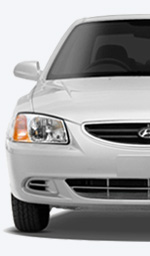 printable version printable version
Stereo
How does your car stereo
The signals in the AM and FM bands are transmitted via repeaters located around the city. The signals coming from them, received by the antenna of the car. When the antenna receives the radio signal is strong, modern audio system provides high-quality playback. However, in some cases, the incoming signal is not strong and clear. This may be due to the distance from the station, proximity to other radio stations or the presence of buildings, bridges or other large objects in your area.
Normally reception of signals in the AM band is better than the signal in the FM range. This is because radio waves are transmitted in an AM broadcast at low frequencies. The long, low frequency radio waves can propagate in the atmosphere, both straight and bend around the curvature of the earth's surface. Moreover, they may bend around various objects and can provide a better radio coverage. Consequently, clear reception of AM signals in the range may be done at greater distances better than the reception signals in the FM band.
Radio waves are transmitted between the FM broadcasting at high frequencies and can not bend around the Earth's surface. Consequently, radio waves in FM band mostly start to subside at a small distance from the transmitting station. Radio waves in the FM band is strongly influenced by buildings, mountains or other objects. This can lead to a deterioration in the quality of play, and you can take it as a radio failure. The following conditions are normal and do not indicate a problem with the radio:
| Propagation FM band in a different area |
- Attenuation - with increasing distance from the transmitting antenna of the car radio the radio signal strength decreases, and the sound begins to fade. In this case, select another station with a stronger signal;
| The emergence of attenuation in the range of FM with increasing distance from the transmitting antenna of the car radio |
- The constant humming noise - a weak FM radio signal range or large obstructions between the transmitter and the receiving antenna of the car give rise to interference in the form of a constant buzzing noise. This effect can be reduced by lowering the level of the tone controls in the treble;
- Mixing signals - as weakening the signal between the FM may appear another stronger signal near the frequency of broadcasting. This occurs when the system is setting a clear signal to the maximum radio. In this case, switch to another station with a stronger signal;
| The emergence of the mixing signals as weakening the signal between the FM and the emergence of another more powerful signal near the frequency of broadcasting |
- Interference noise - hit the antenna of the car radio, received from different directions, can lead to permanent buzzing noise. This can be caused by contact with the antenna of the car radio, and a direct signal of the reflected signal of one or two stations broadcast signals from stations broadcasting in similar frequencies. In this case, switch to another station, as long as these conditions persist.
|







